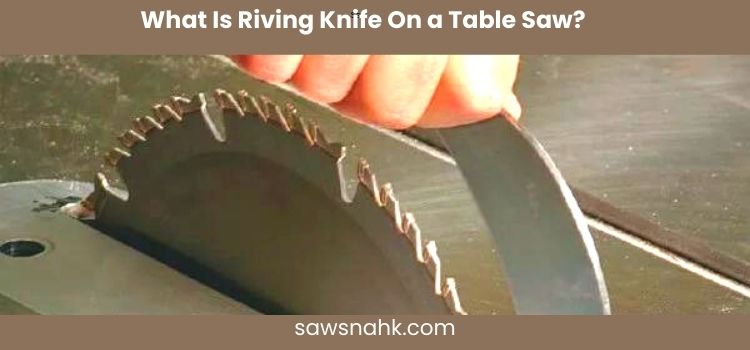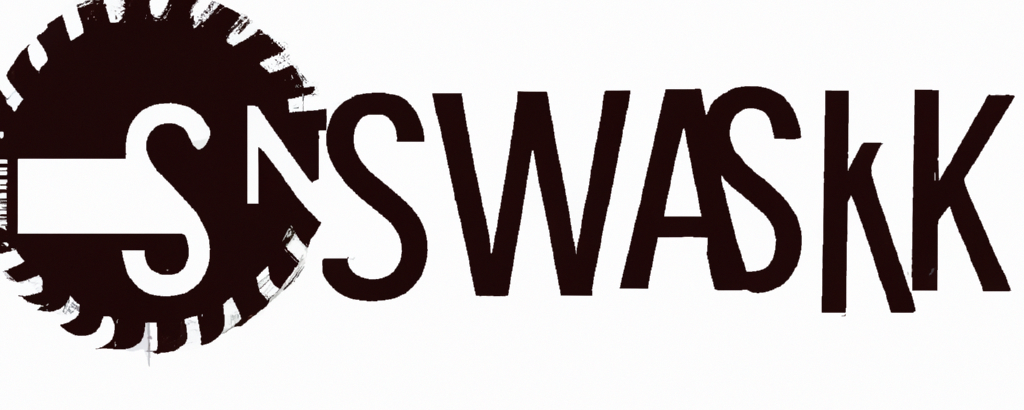What Is Riving Knife On a Table Saw?

A table saw is a very versatile machine; it makes woodcutting easy and faster. For better results, it is important to understand the different parts of the Table saw. When you try to cut a block of wood through a table saw blade, the saw blade pushes the wood toward you. So, knives are placed behind the blades to prevent this kickback.
What is a Riving Knife?
A riving knife is a safety device installed on a table, circular, and radial arm saw used for woodworking. It lives behind the table saw and is fractionally shorter than the tip of the saw blade. It is installed fixedly and relative to the depth of the saw blade. Moreover, you can position at different heights according to the task needed.
Purposes of the Riving knives:
- A riving knife is mainly used as a safety feature that prevents kickbacks. It is knife-like in appearance, resting behind the saw’s blade.
- A knife functions most easily and safely within the saw’s kerf.
- It is adjustable, and you can adjust its height to make the blade cut more precisely and ensure that the wood would not shoot back.
- The function of the Riving knife is to separate the wooden outfeed pieces. When the piece is warped or fed incorrectly, it will prevent the punching on the blade, resulting in burning or kickback.
- A riving knife helps prevent all potential hazards; it shields the teeth of the blade and, thus, prevents wood snagging.
How Thick Should the riving knife be?
You do not want the Kref to be extended while cutting the wood, as it affects the cut by splitting or binding. So your Riving knife should be made of steel and be thinner than the saw blade thickness. This will allow your wood to pass smoothly beyond the blade and the knife, the smooth and uniform cut.
It would help to hold the Riving knife at a relative height beyond the blade so the distance between them remains constant. This distance is similar, so the protection given by the knife is consistent.
How Does A Riving Knife Prevent Kickbacks?
A riving knife does not allow the wood to be thrown back at the operator or blade, which can cause severe damage or injuries. You must try to keep your fingers safe.
Kickbacks occur when the circular saw’s blade is jammed with wood or the cut piece is huge. The Riving knife prevents these situations by using itself as a barrier between the blade and the operator. You must properly align the knife with the blade to avoid kickbacks.
Riving Knife for Saw Safety:
Table saw is a versatile machine; it will take a few milliseconds to suffer a life-altering injury. So for safety, you must use a Riving knife because, at worst, it will suck your hand into the spinning blade, and your finger will fly, or perhaps you will embed a piece of wood in your chest or forehead.
A riving knife is also used to cut a huge piece of wood; when you are cutting a huge piece of wood, it might be huge to bind the blade. In such cases, a Riving knife is used to prevent that binding. So for the safety sack, the blade and operator-riving knife are used. For safety features, you can try blade guards. Every saw table comes with a splitter that holds up the blade guard.
Conclusion:
In conclusion, what is riving knife on a table saw? A Riving Knife stays beyond the circular saw and helps to prevent kickbacks by keeping the blade in the bound of the workspace. It occurs when the blade is stuck in the material’s cutting which can cause serious damage to the operator, causing the binding of the blade. A riving knife ensures that the wood is cut smoothly and uniformly.
This idea’s pivot is that cutting materials with a Riving knife on the table saws works without fear of injury. A couple of reasons for this safety are the piece of can fill into the saw kerf and made the saw blade as the materials come in.
FAQs:
How is a riving knife different from a splitter?
A riving knife moves with the blade, while a splitter is a fixed vertical projection.
Should the riving knife be thicker than the blade?
No, the riving knife should be slightly thinner to prevent binding and kickback.
How close should the riving knife be to the saw blade?
The riving knife should be about 1/8 to 1/4 inch (3 to 6 mm) away from the blade.
